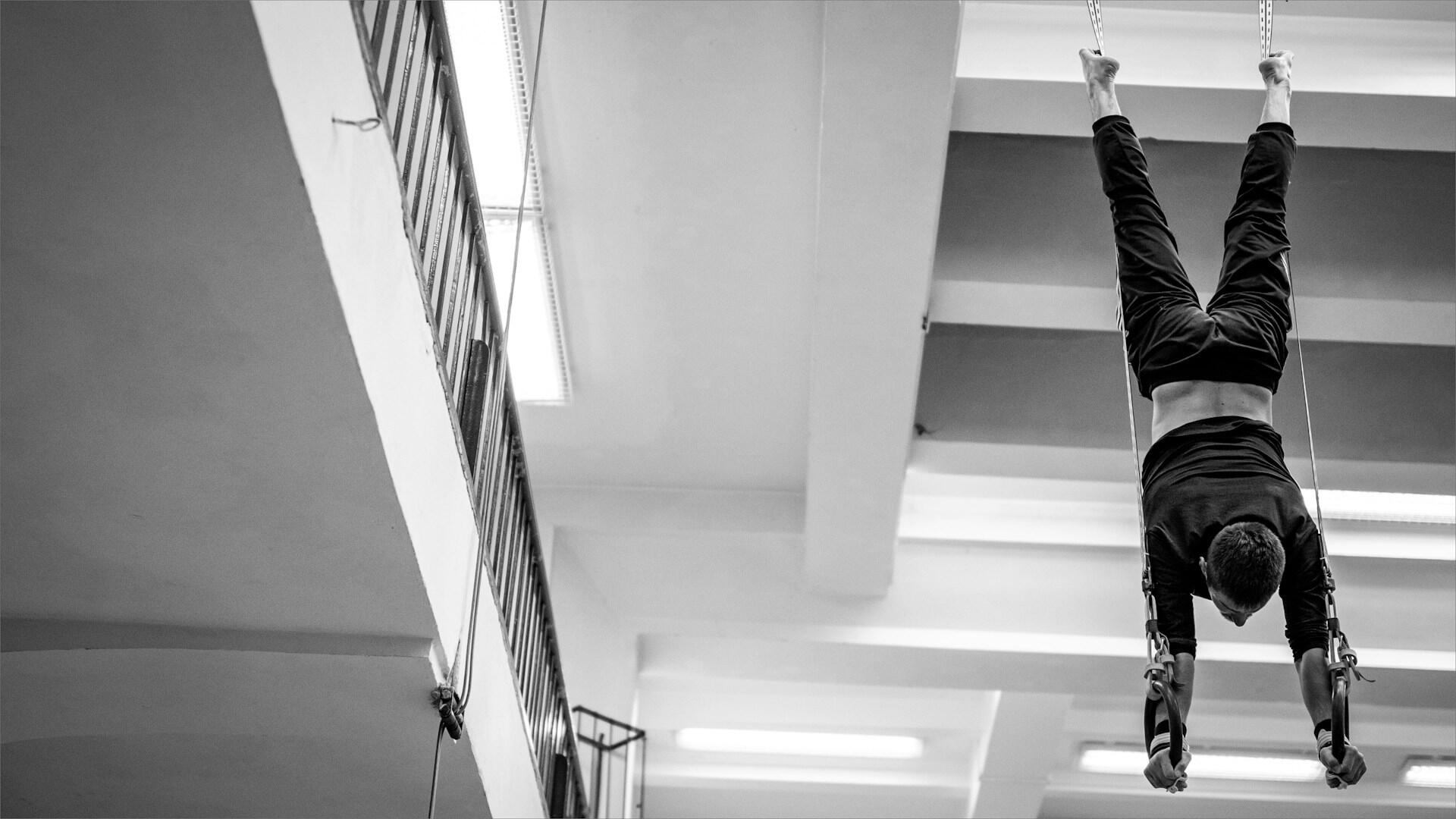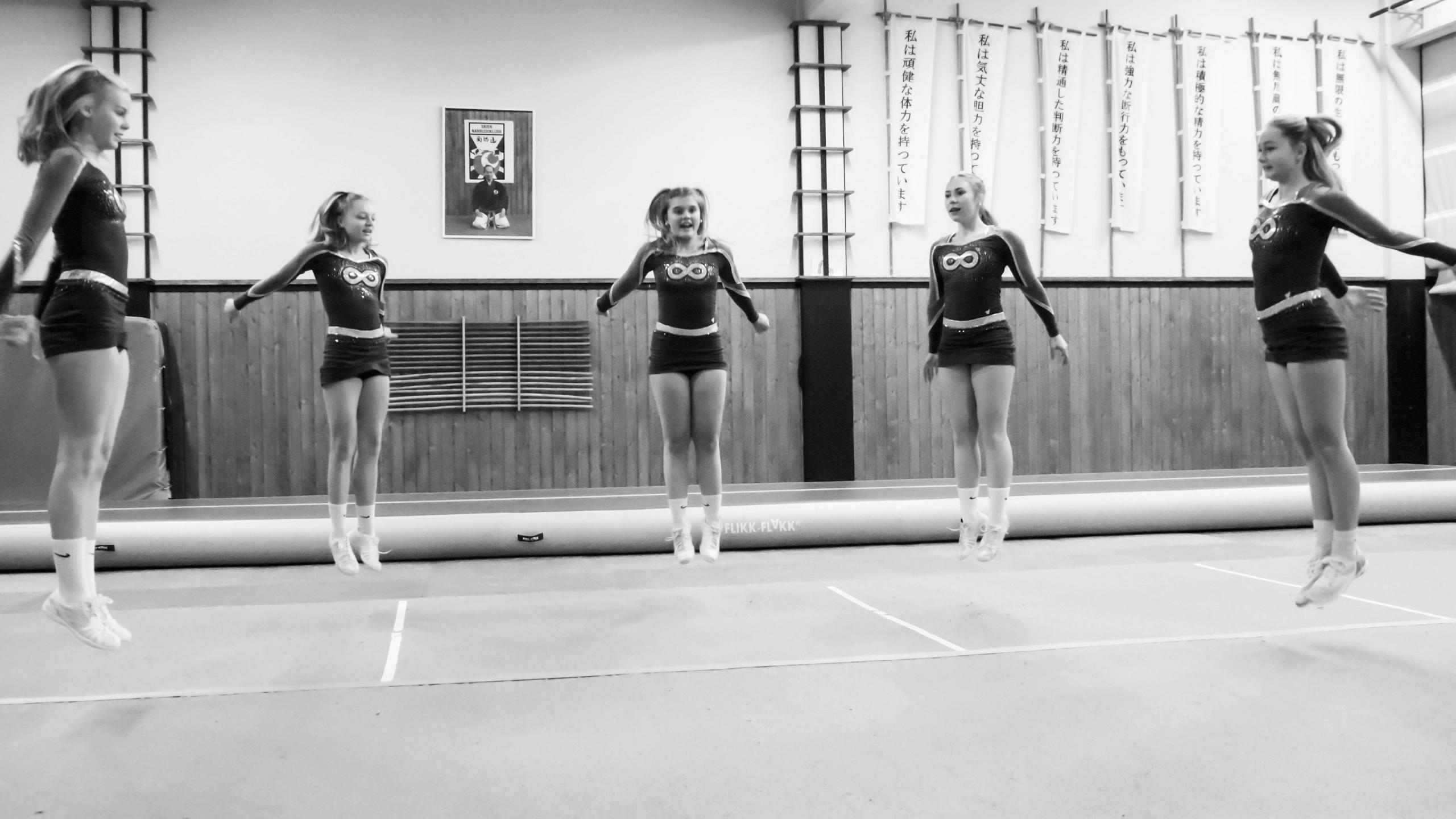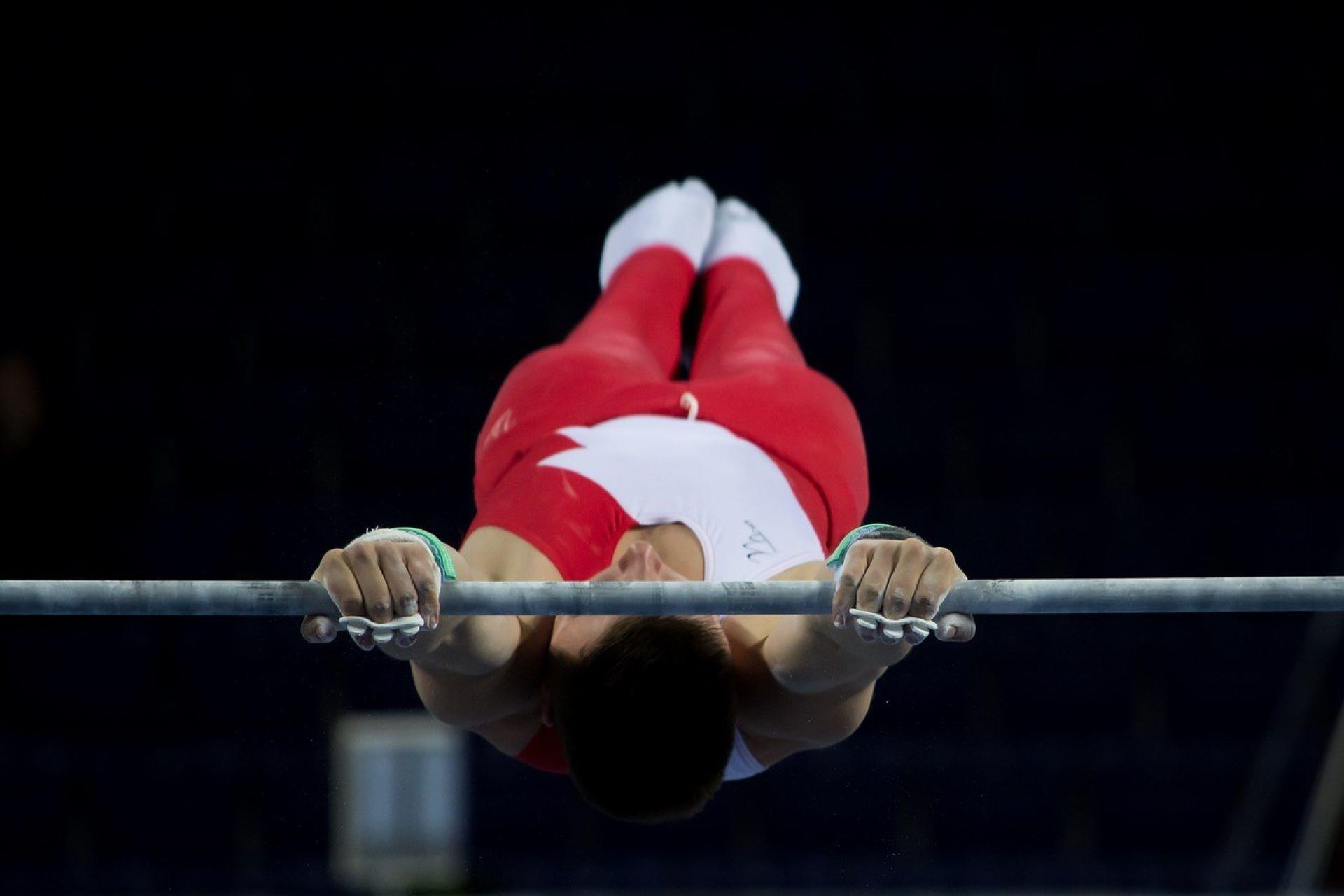The mental focus required in gymnastics is what separates the good from the great.
Sam Mikulak, Six-time U.S. national champion and Olympic gymnast
Men’s gymnastics is a challenging sport that brings together power, precision and control. With six distinct events, gymnasts demonstrate their skills by pushing their bodies to perform impressive routines. Each event offers a different challenge, requiring gymnasts to balance strength, flexibility and technique. Let’s break down the six men’s gymnastics events and see what makes each one special. Are you looking for a gymnastic coach? Anyone can start learning gymnastics through platforms like Superprof!
Key Takeaways: The Six Men’s Gymnastics Events
- 🤸♂️ Floor Exercise (FX): This event emphasizes tumbling and acrobatic skills on a 12x12 meter mat, requiring a mix of strength, flexibility and precision without the use of music.
- 🐴 Pommel Horse (PH): Known for its complexity, the pommel horse demands exceptional upper body strength, coordination and rhythm as gymnasts perform circular leg movements and transitions.
- 💪 Still Rings (SR): The rings event showcases pure strength and control, with gymnasts holding static poses like the iron cross and performing dynamic swings.
- 🚀 Vault (VT): A high-speed event requiring explosive power and aerial skills, where gymnasts sprint, jump off a springboard and perform flips and twists before landing.
- 🏆 Parallel Bars (PB): Gymnasts demonstrate fluidity and strength as they swing, hold handstands and perform flips on two parallel bars, focusing on precision and coordination.
- 🏅Horizontal Bar (HB): Known for gravity-defying release moves, this event requires excellent timing, grip strength and the ability to perform daring dismounts with perfect landing control.
As of the 2024 Paris Olympics, the United States has accumulated a total of 117 medals in artistic gymnastics since the 1904 St. Louis Games.

Floor Exercise (FX)
The floor exercise is all about showcasing acrobatics and physical control on a mat. Performed on a mat measuring 12x12 meters, this event allows gymnasts to demonstrate tumbling sequences, strength elements and flexibility in a choreographed routine.
What Happens in a Floor Routine?
Gymnasts perform a variety of tumbling passes, combining flips, twists and other complex movements. They also include strength poses such as planches and handstands to show control. Unlike the women’s floor exercise, men’s routines are not performed to music, but transitions and body movements are still expected to flow naturally. Would you like to know more about the men's floor gymnastic event?
This difference originates from historical traditions and judging criteria in gymnastics.
Men’s floor gymnastics focuses on powerful tumbling, strength elements and clean acrobatics without music, emphasizing athleticism and control. Women’s routines combine tumbling with leaps, dance and choreography set to music, highlighting artistry and expression alongside skill.
Key Requirements
- Tumbling Variety: Routines must include different directions of movement, such as backward and forward tumbling.
- Precision: Clean landings and well-defined body positions are essential to avoid point deductions.
- Energy Management: Gymnasts must pace themselves to execute difficult skills while maintaining control throughout the routine.
Here's Kohei Uchimura's floor routine at the 2014 World Championships on YouTube!
Pommel Horse (PH)
The pommel horse is often seen as one of the most challenging apparatuses in men’s gymnastics. This event requires exceptional upper-body strength, rhythm and coordination as gymnasts swing their legs in continuous circular motions while supporting themselves on the horse. Are you looking to learn all about pommel horse?
What Happens on the Pommel Horse?
Gymnasts use their hands to shift their weight as they perform circular movements with their legs. They include scissor elements, transitions between different parts of the horse and occasionally lift one hand off the apparatus to perform single-arm moves.
Scissors is a pommel horse technique!
The different techniques include foundational circles, advanced flairs, scissor elements, spindles, Russian wendeswings and travels. Gymnasts also incorporate transitions like handstands and dismounts to showcase their control, strength and precision.
Key Requirements
- Body Position: Legs must remain straight and toes should stay pointed throughout the routine.
- Flow and Consistency: Movements must be seamless, with no breaks or pauses.
- Technical Difficulty: Advanced routines feature elements like flares (wide circular motions) and one-arm swings.
Here's a YouTube video of the men's pommel horse finals in the 2024 Paris Olympics!
Still Rings (SR)
The still rings event highlights pure strength and control. Gymnasts perform their routines on two rings suspended from above, combining static poses with swinging elements.
What Happens During a Rings Routine?
Routines include a mix of strength-based holds, dynamic swinging moves and transitions. Gymnasts must demonstrate their ability to stay perfectly still during strength elements like the iron cross, while also performing controlled swings to reach handstand positions. A difficult dismount often concludes the routine.
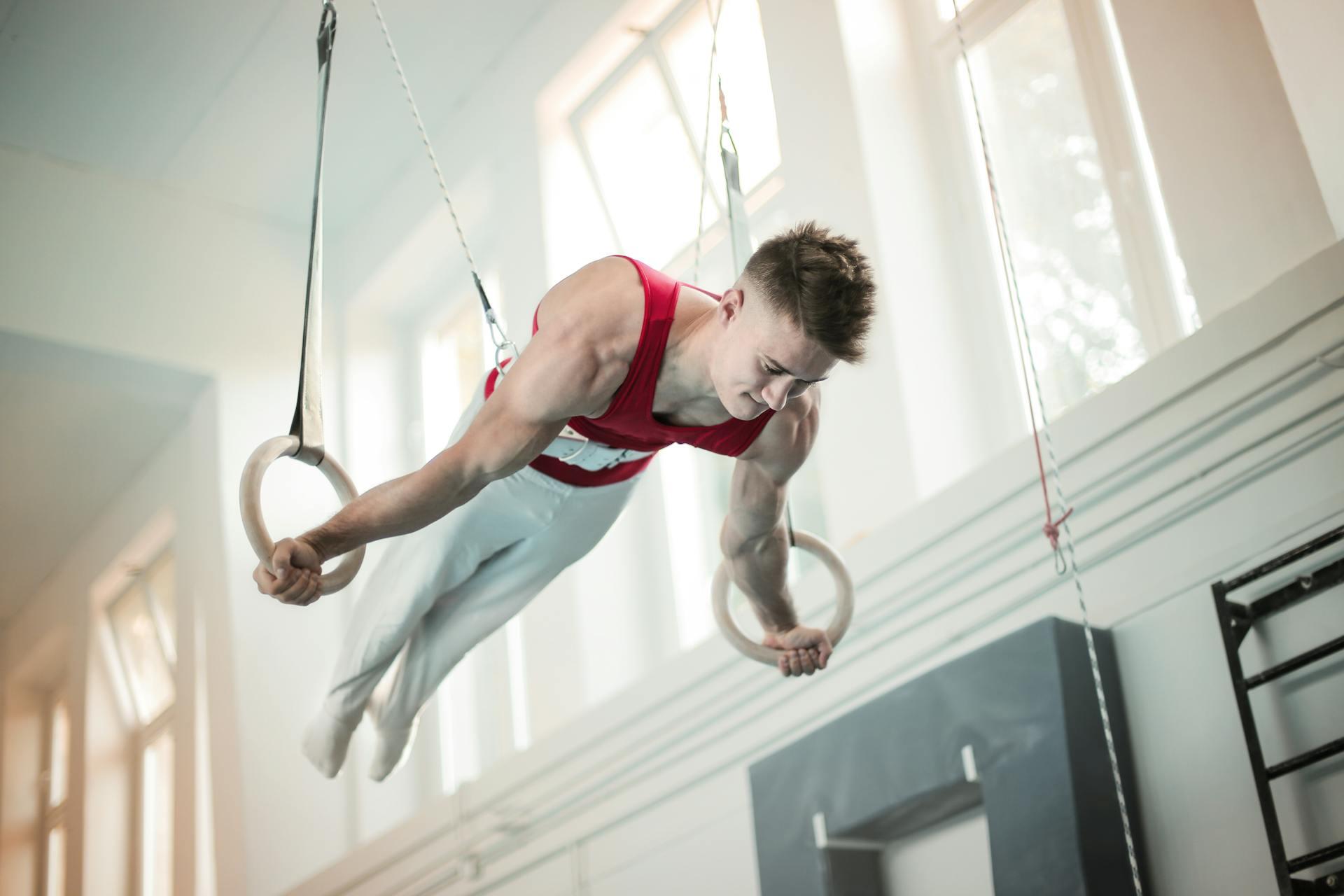
Discover more about the men's gymnastics rings in our article!
Key Requirements
- Strength and Stability: Moves such as the iron cross and planche must be held without any movement for at least two seconds.
- Control in Transitions: Swinging movements should flow smoothly without losing balance.
- Dismount Execution: The routine’s final move must display control and a secure landing.
Here is Liu Yang's ring's routine from the 2020 Tokyo Olympics!

Vault (VT)
Vault is an exciting, high-speed event that highlights explosive power and precision. A single vault consists of a sprint, a springboard jump, and an aerial routine that ends with a landing.
What Happens During a Vault?
Gymnasts start with a 25-meter run to build momentum. They hit the springboard, push off the vault table and perform flips and twists in mid-air. The event is completed in just seconds but requires exceptional focus to execute correctly.
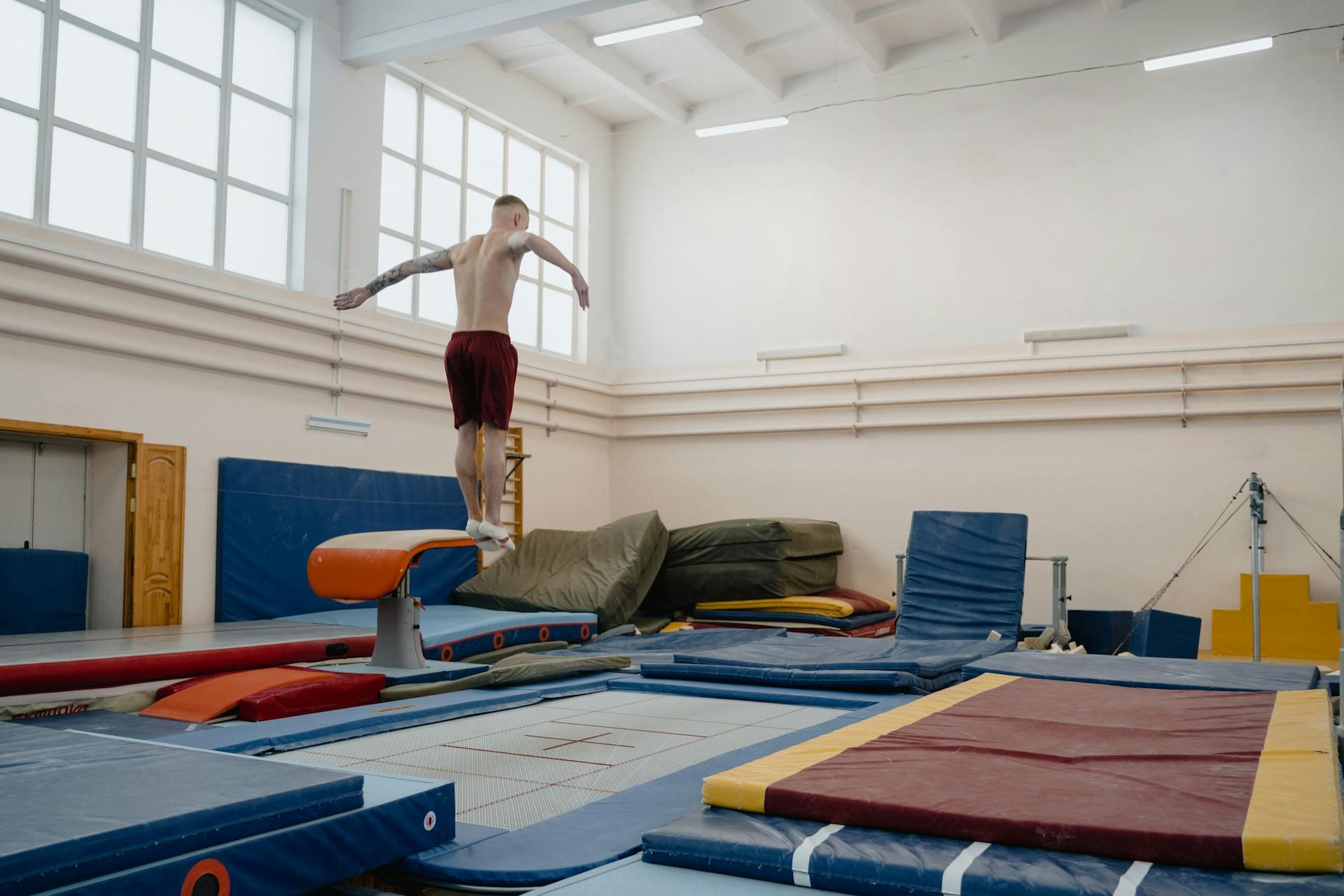
Key Requirements
- Speed and Power: A fast run-up ensures enough force to propel the gymnast into the air.
- Aerial Skill: Mid-air movements should be performed with clean form, straight legs and pointed toes.
- Landing Stability: A controlled landing, free from steps or wobbles, is critical to achieving a high score.
Watch on YouTube how the Vault in gymnastics has evolved over the years, becoming more challenging with each Olympic Games. The sport continues to grow and new moves are sure to emerge in the future !
Parallel Bars (PB)
The parallel bars event allows gymnasts to display their strength and fluid motion through a series of skills performed on two horizontal bars. This event emphasizes smooth transitions and control.
What Happens on the Parallel Bars?
Gymnasts swing, hold handstands and perform flips while maintaining control between the two bars. Movements include pirouettes, transitions and dynamic releases where the gymnast lets go of the bars momentarily before regrasping them. Are you interested in the men's gymnastics parallel bars event?
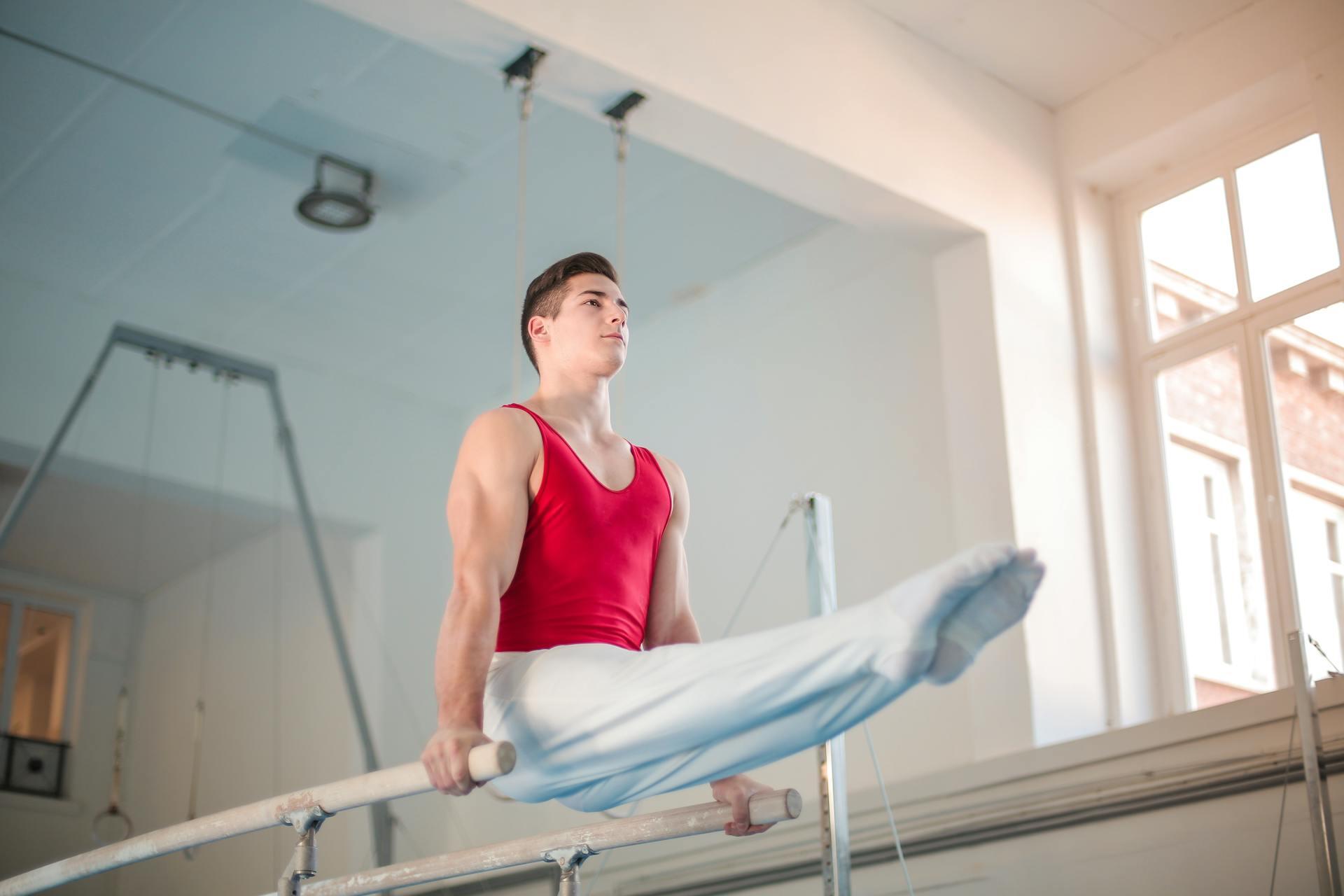
Key Requirements
- Precision: Handstands must be perfectly aligned and all movements should be executed cleanly.
- Strength and Coordination: Static holds and swinging elements must blend effortlessly.
- Creativity: Gymnasts often incorporate skills that highlight their individual strengths and style.
Here is the men's parallel bars final from the Rio Olympics on YouTube !
Horizontal Bar (HB)
The horizontal bar, also known as the high bar, is an event where gymnasts perform gravity-defying releases and swings. This apparatus requires excellent timing, grip strength and confidence.
What Happens on the Horizontal Bar?
Starting with a series of giant swings around the bar, gymnasts build momentum to perform release moves and intricate twists. The routine ends with a daring dismount, often involving multiple flips and twists before landing.
Key Requirements
- Amplitude: Large, extended swings demonstrate control and power.
- Release Moves: Letting go of the bar to perform flips and twists is a key part of the routine.
- Dismount Precision: The gymnast must finish with a well-controlled landing to maximize their score.
Here's a quick guide to the horizontal bar on YouTube!
Learning Gymnastics Through Superprof
For those inspired by the skill and determination of gymnasts, learning these events may feel like an exciting challenge. Superprof provides a way to connect with experienced gymnastics coaches who can guide you through the process, no matter your current skill level!
Why Choose Superprof?
Superprof offers a wide selection of tutors who specialize in gymnastics. These instructors provide personalized lessons, focusing on your strengths and helping you build the skills needed to succeed.
Steps to Start
Step One
Find a Tutor
Use Superprof’s platform to locate coaches in your area or choose online lessons for added flexibility.
Step Two
Set Your Goals
Share your aspirations with your instructor, whether you’re interested in recreational gymnastics or want to compete.
Step Three
Follow a Structured Plan
With guidance from a coach, you’ll develop foundational skills and gradually progress to more advanced techniques.
Step Four
Stay Dedicated
Regular practice and feedback from a professional will help you improve steadily.
Take the Leap into Gymnastics
Men’s gymnastics offers challenges and excitement, with each event pushing athletes to their limits. From powerful floor routines to mastering the high bar, the six events offer endless opportunities for growth and achievement. Platforms like Superprof make it easier than ever to learn these skills under qualified coaching. Whether you’re just starting or looking to refine your abilities, gymnastics can be a very rewarding challenge!

